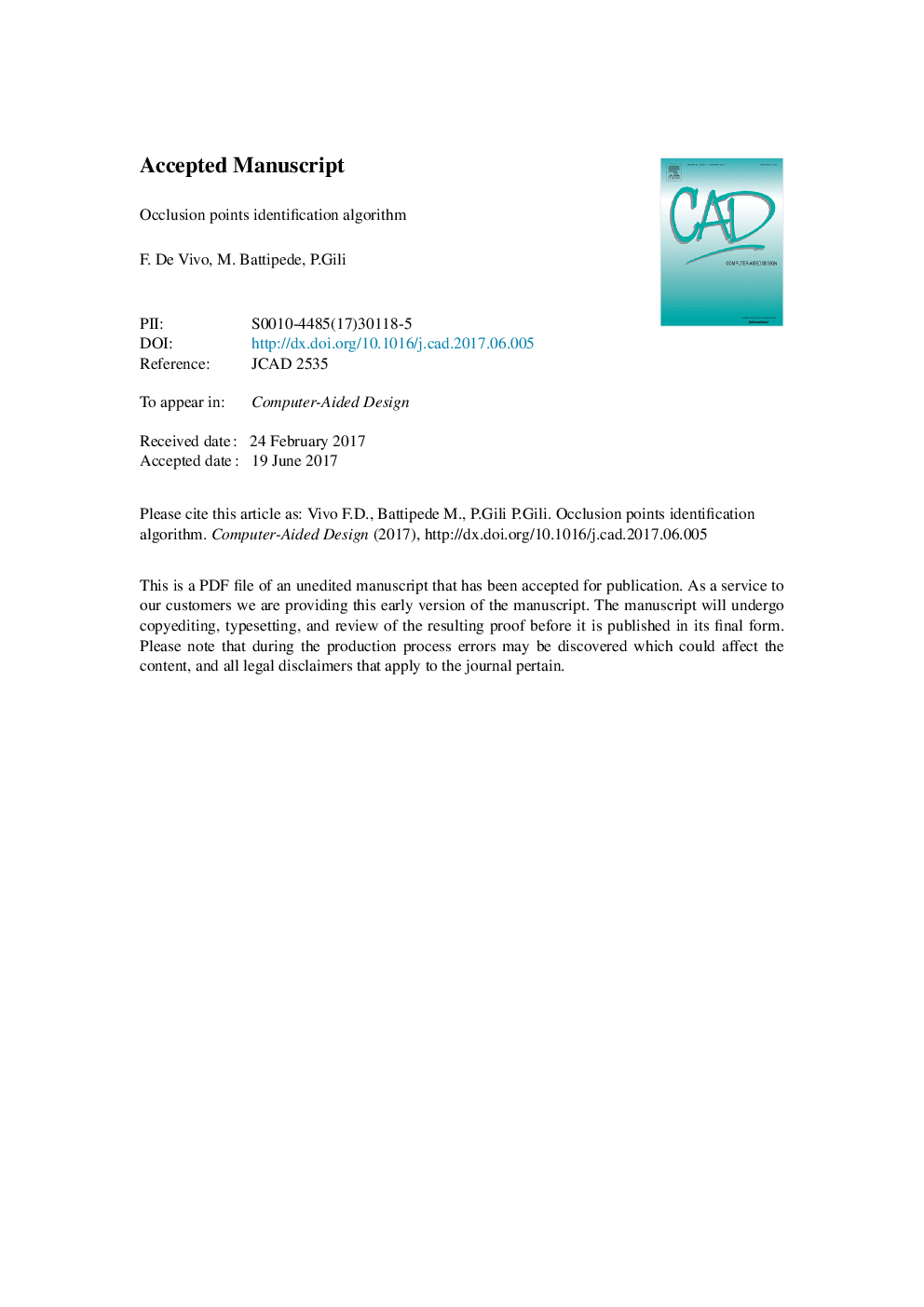| Article ID | Journal | Published Year | Pages | File Type |
|---|---|---|---|---|
| 4952549 | Computer-Aided Design | 2017 | 16 Pages |
Abstract
In this paper a very simple and efficient algorithm is proposed, to calculate the invisible regions of a scene, or shadowed side of a body, when it is observed from a pre-set point. This is done by applying a deterministic numerical procedure to the portion of scene in the field of view, after having been projected in the observer reference frame. The great advantage of this approach is its generality and suitability for a wide number of applications. They span from real time renderings, to the simulation of different types of light sources, such as diffused or collimated, or simply to calculate the effective visible surface for a camera mounted on board of an aircraft, in order to optimize its trajectory if remote sensing or aerial mapping task should be carried out. Optimizing the trajectory, by minimizing at any time the occluded surface, is also a powerful solution for a search and rescue mission, because a wider area in a shorter time can be observed, particularly in situations where the time is a critical parameter, such as, during a forest fire or in case of avalanches. For its simplicity of implementation, the algorithm is suitable for real time applications, providing an extremely accurate solution in a fraction of a millisecond. In this paper, the algorithm has been tested by calculating the occluded regions of a very complex mountainous scenario, seen from a gimbal-camera mounted on board of a flying platform.
Related Topics
Physical Sciences and Engineering
Computer Science
Computer Graphics and Computer-Aided Design
Authors
F. De Vivo, M. Battipede, P. Gili,
